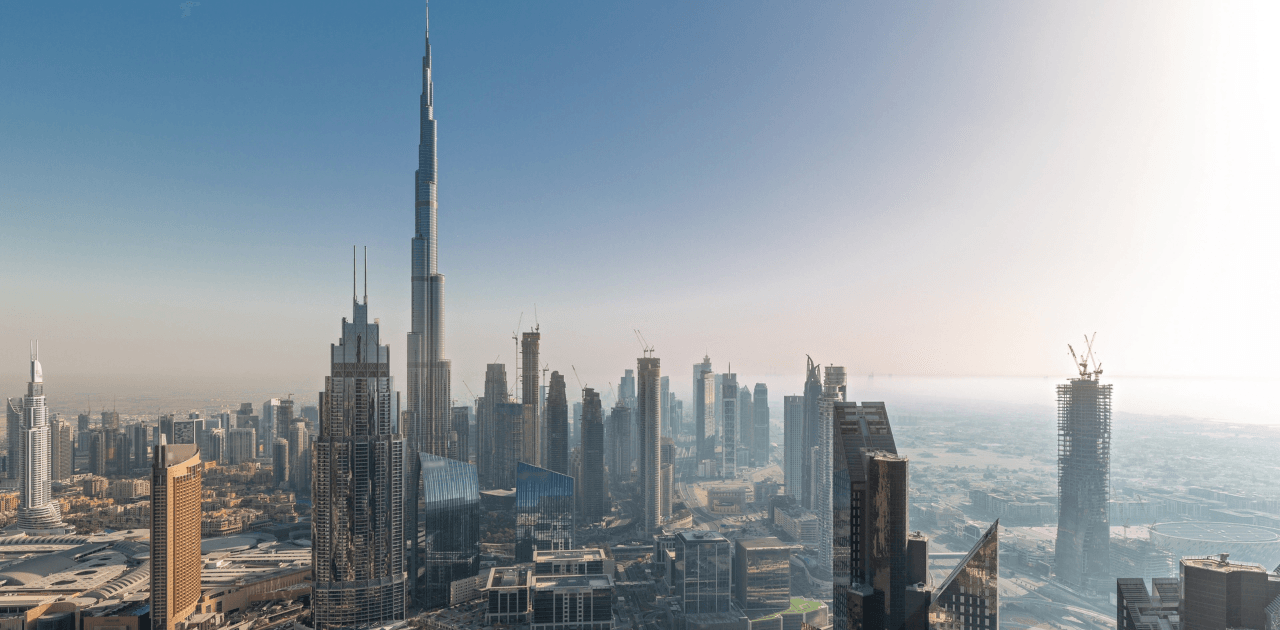Well, you’re in for quite the adventure, but not in an overwhelming, “bucket-list” kind of way. Dubai is one of those places where skyscrapers meet sand dunes, where you can sip Arabic coffee in a centuries-old courtyard and then shop in a mall with an indoor ski slope, all in the same day.
If someone’s visiting for the first time in 2025, it helps to have a clear idea of what to expect. That’s exactly what this Dubai travel guide is for. It’s written for the friend who asks, “Hey, what’s actually worth doing in Dubai?” and wants the answers without a sales pitch.
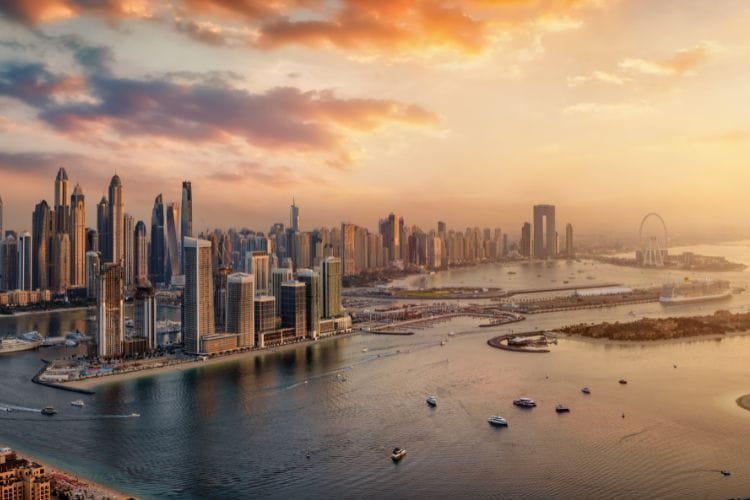
When’s the Best Time to Visit Dubai?
Let’s be honest, Dubai in the summer? It’s brutal. We’re talking daytime temperatures reaching 45°C (113°F). Even the locals avoid walking outside for long.
So, what’s the smart move? Visit between November and March, when the weather’s sunny but mild, think 24°C to 28°C (75°F to 82°F). It’s also when most of the outdoor events and festivals happen.
In 2023, the city welcomed over 17 million international visitors, with the majority arriving during these cooler months. The vibe is lively, especially around New Year’s and during the Dubai Shopping Festival.
But here’s a tip: if someone wants fewer crowds and lower hotel prices, late April or early October might be a good compromise, just pack some extra sunscreen.
Entry Requirements: What First-Timers Should Know
Dubai is surprisingly easy to enter, no complicated red tape for most nationalities. Travelers from the US, UK, Canada, EU, Australia, and more than 70 countries can get a visa on arrival. That means no forms, no embassy visits, just land and go.
For those who don’t qualify, applying for eVisa is straightforward. It’s done online, and approvals typically take just 2–4 business days.
Something often missed? Passport rules. Make sure it’s valid for at least six months from the date of travel. No exceptions there. Download the “GDRFA ” app before arrival. It helps track your visa status and avoid any airport surprises.
And while travel insurance isn’t required, it’s a smart idea. Basic coverage for a week costs around $30–$50 USD, and it’ll save a lot of stress in case of any medical issues or trip delays.
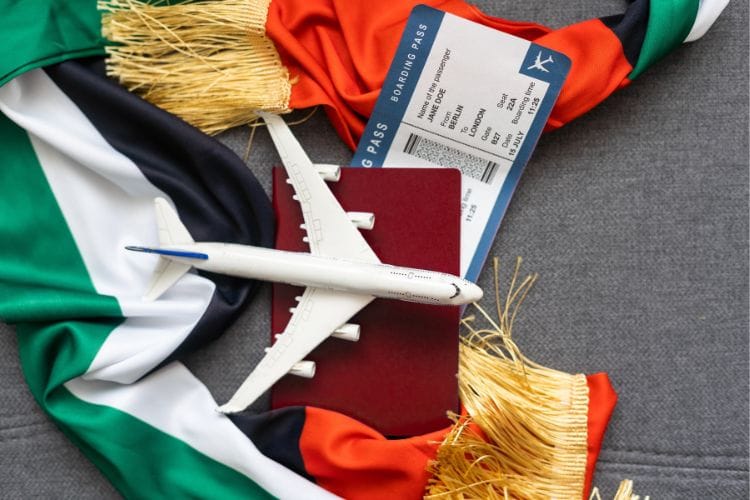
Getting There: Flights and Airports
Dubai has two major airports, but Dubai International Airport (DXB) is the big one. In 2023, it handled 86.9 million passengers, making it one of the busiest international hubs in the world.
If flying from Europe or Asia, the flight is usually around 6–8 hours. From the US or Canada, expect a longer haul, 13 to 16 hours, depending on the route.
Once you land, getting to your hotel is easy:
- Taxis are available 24/7 and cost around AED 50–70 ($13–19) to downtown.
- Metro Red Line connects the airport to the main city stops and runs every 10 minutes.
- Apps like Careem (the local favorite) and Uber work great too.
For those arriving at Al Maktoum International Airport (DWC), mostly budget airlines, it’s a longer drive to the city, about 40–50 km, but shuttle buses and ride-share apps are still available.
This Dubai travel guide wouldn’t be complete without a tip: always carry a small amount of AED (UAE Dirham) in cash for taxis or small purchases. Most places take cards, but it’s good to have cash for things like tipping or snacks from a local shop.
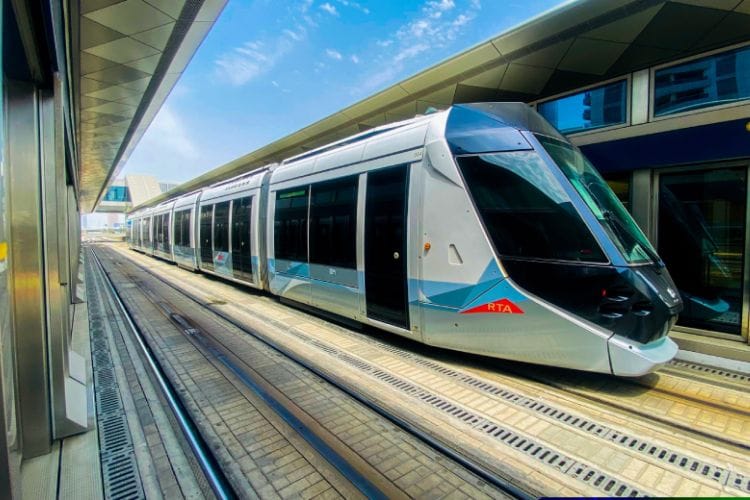
Where to Stay: Finding the Right Spot
Here’s the thing, Dubai isn’t small, and where someone stays can completely shape their entire trip. The city stretches across various districts, each offering a different vibe, pace, and price tag. Whether you’re traveling for adventure, shopping, beach time, or a cultural deep dive, there’s a neighborhood to match your priorities. This part of the Dubai travel guide helps you figure that out.
Downtown Dubai
If it’s your first time in the city and you want to be near the action, Downtown Dubai is the obvious choice. This is where you’ll find some of the city’s biggest landmarks: the Burj Khalifa, the Dubai Mall, and the Dubai Fountain. It’s a very walkable area and loaded with cafes, international restaurants, and photo ops.
- Budget-friendly: Rove Downtown (~$90/night) – modern, clean, and super close to everything.
- Luxury pick: Address Downtown ($400+/night) – unbeatable views and premium amenities.
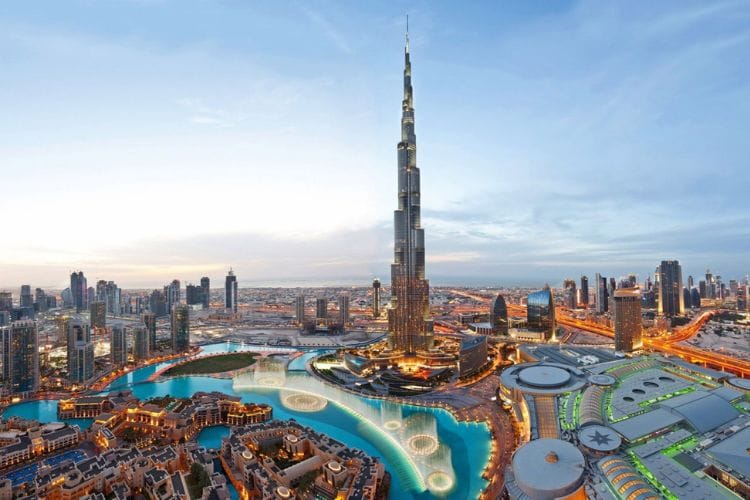
JBR and Dubai Marina
Looking for beach access with a trendy vibe? JBR (Jumeirah Beach Residence) and Dubai Marina offer a relaxed coastal atmosphere. You’ll find beach clubs, smoothie bars, and plenty of nightlife here. Great for couples or solo travelers who love an ocean breeze.
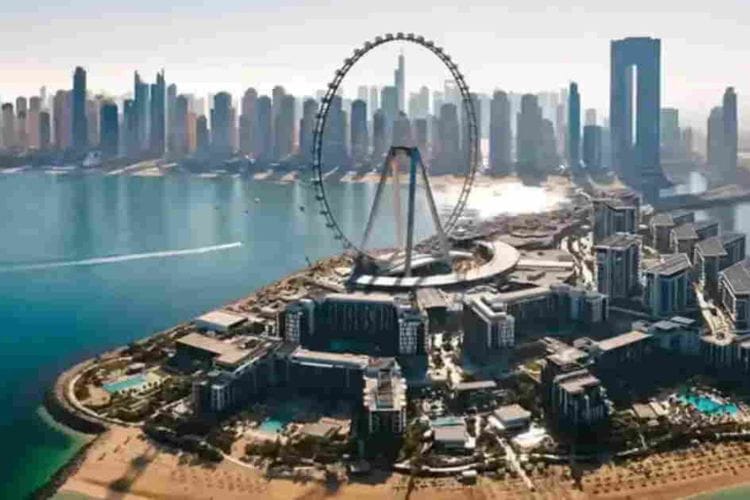
Deira & Bur Dubai
This is the old soul of the city. Deira and Bur Dubai are home to traditional markets (souks), heritage sites, and local food spots. It’s ideal for travelers who want to experience authentic Dubai without blowing their budget.
- Typical rates: Rooms often range from $40–60 USD/night, depending on season and availability.
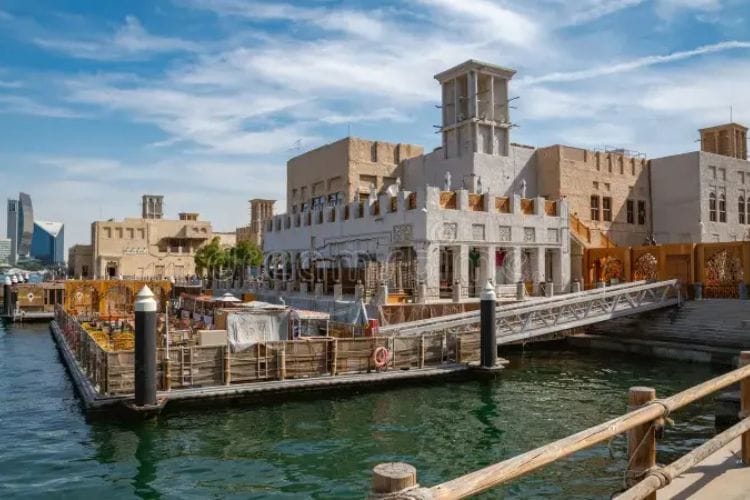
Getting Around Dubai: No Car? No Problem
So, how does someone explore a city where the roads look like they came out of a video game? Turns out, it’s easier than expected.
Dubai’s public transport system is modern, safe, and surprisingly affordable. The Dubai Metro is the backbone, clean, air-conditioned, and runs on time. The Red Line covers all the main tourist areas:
Airport → Deira → Burj Khalifa/Dubai Mall → Mall of the Emirates → Marina.
For short stays, a Nol Card (Dubai’s transport card) is super handy. The Silver Nol Card costs just AED 25 ($6.80 USD) and comes with AED 19 credit. You can use it on the metro, buses, trams, and even water taxis.
Of course, there are taxis everywhere, and they’re metered. A short ride around town typically costs AED 12–30 ($3–8 USD) depending on distance. Apps like Careem and Uber work well too, Careem usually has better rates.
Walking? Sure, but not in the summer. From June to September, it’s really only safe to walk short distances during early mornings or after sunset. In cooler months, though, walking around areas like Downtown, JBR, or Old Dubai can be genuinely enjoyable.
Top Attractions in Dubai
Here’s top attractions in Dubai that are actually worth visiting, especially for first-timers:
1. Burj Khalifa
At 828 m high, the Burj Khalifa is the world’s tallest building, opened in 2010 and built using over 330,000 m³ of concrete, roughly the weight of 100,000 elephants, and aluminum equivalent to five Airbus A380 plane. Visitors can ride the world’s fastest elevators (up to 10 m/s) to Levels 124, 125, and the open-air Level 148 observation deck at 555 m, the highest such deck globally. Activities include At.mosphere, the highest restaurant at 442 m, and panoramic views. Special LED and fireworks shows light up the tower during holidays and New Year’s Eve, drawing global attention.
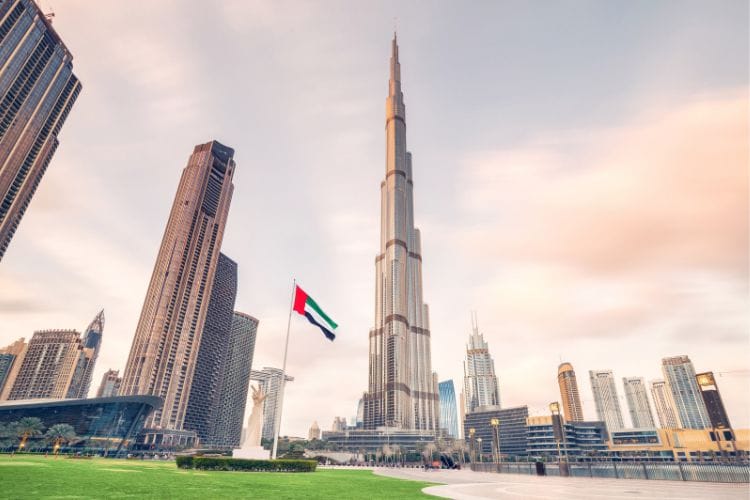
2. Dubai Aquarium & Underwater Zoo
Located inside the Dubai Mall, this aquarium holds 10‑million liters of water and houses 33,000 animals across 300 species, including sharks and rays. It features a 48‑m shark tunnel, panoramic views from three mall floors, and zones like the Rainforest and Ocean. Activities: guests can take a glass-bottom boat tour, dive with sharks, or join feeding sessions. The aquarium attracts around 5 million visitors annually, making it one of the world’s busiest indoor attractions.
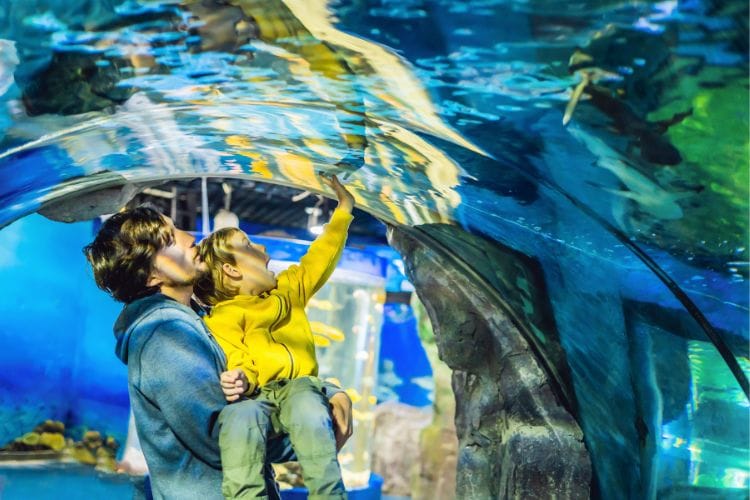
3. Desert Safari at Dubai Desert Conservation Reserve
In Dubai’s 225 km² Desert Conservation Reserve, visitors enjoy dune bashing, camel rides, sandboarding, and live shows at Bedouin camps. Many safaris run at sunset or sunrise for breathtaking light over the dunes. Activities often include cultural touches, henna painting, Arabic coffee, traditional attire and falcon displays at eco-conscious camps. Tours generally cost between AED 120–250 (~USD 33–68), offering a blend of adventure and heritage in a protected desert setting.

4. Dubai Frame
This landmark looks like a giant golden picture frame, offering views of both Old Dubai (Deira) on one side and modern Downtown on the other. Visitors take a lift to the top sky bridge, which includes a glass-floor walkway and multimedia displays about Dubai’s past and future. Entry is approximately AED 50 (~USD 14), and exhibits explain the city’s transformation over decades. Its photographic contrast of skyline scenes makes it one of the city’s most visually compelling attractions.
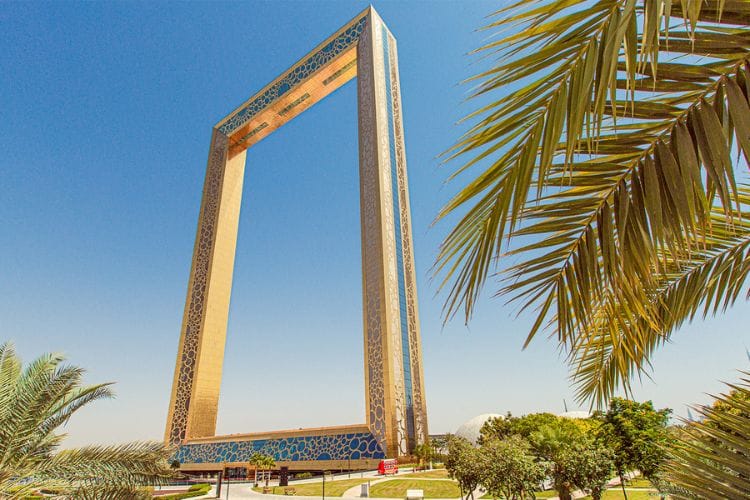
5. Museum of the Future
Opened in recent years, the Museum of the Future showcases immersive exhibitions on tomorrow’s technology and environment. Zones include Inhabit the Skies, Wonders of Nature, and a wellness-focused Reviving Your Senses section. Visitors engage with AR experiences, attend talks by tech leaders, and explore interactive displays on sustainability and innovation. A typical visit lasts 2–3 hours, with general admission around AED 149 (~USD 41). The building itself is a striking architectural icon, symbolizing Dubai’s forward-thinking vision.
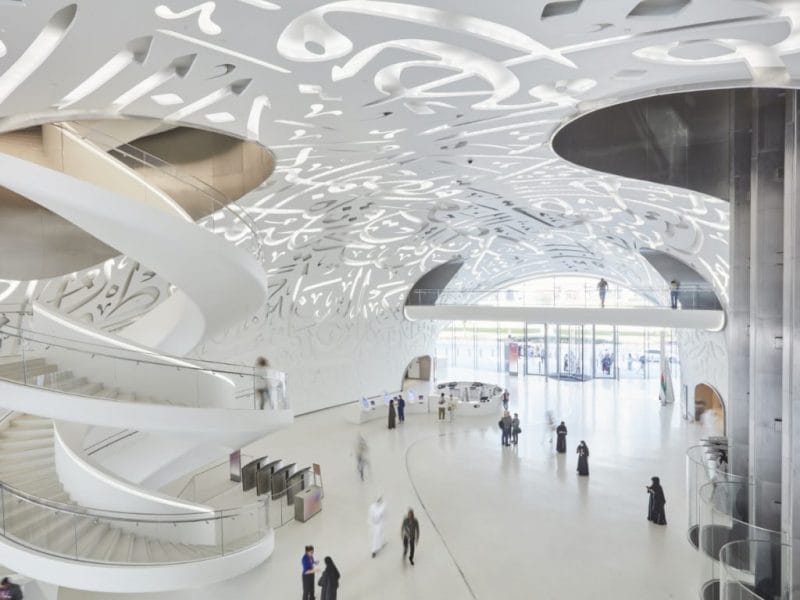
6. Ain Dubai (Dubai Eye)
Located on Bluewaters Island, Ain Dubai is the world’s tallest observation wheel, towering at 250 meters (820 feet). It offers unmatched panoramic views of Dubai Marina, Burj Al Arab, Palm Jumeirah, and even parts of the desert. A single rotation takes around 38 minutes, making it a slow, immersive ride perfect for photos or sunset viewing. Visitors can book shared or private cabins with VIP experiences. Opened in October 2021, Ain Dubai is a favorite for couples and families alike.
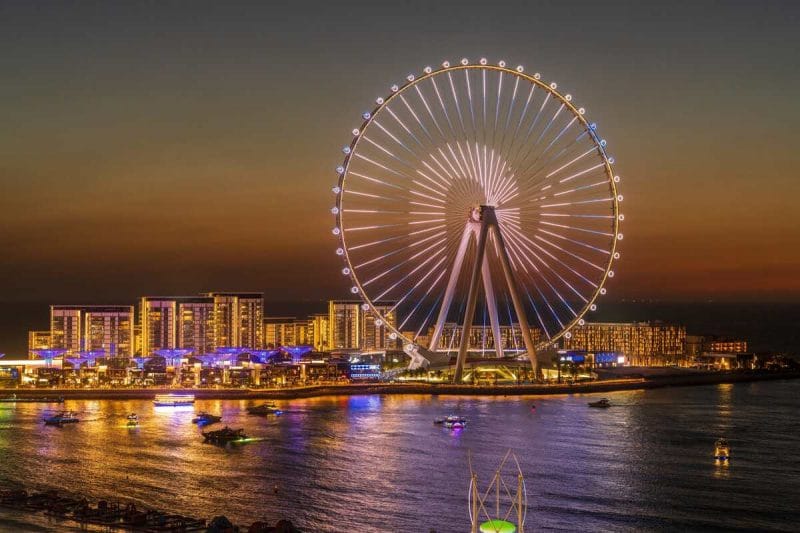
7. The View at The Palm
Standing at 240 meters on the 52nd floor of the Palm Tower, The View offers an unforgettable 360-degree view of Palm Jumeirah, the Arabian Gulf, and Dubai’s skyline. It also includes an interactive museum and exhibition on the history and development of the island. Visitors can enjoy coffee at the rooftop café or book VIP sunset packages. It’s less crowded than Burj Khalifa’s deck and perfect for relaxed sightseeing.
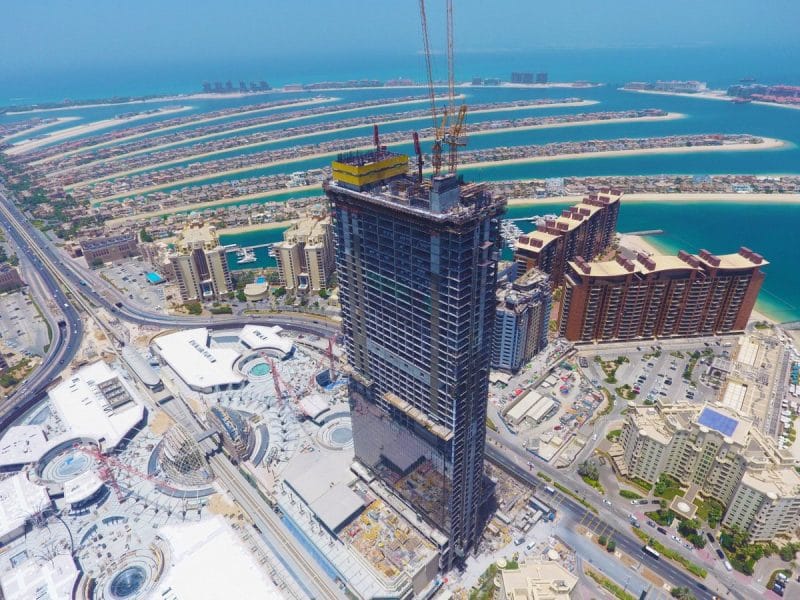
8. Dubai Dolphinarium
Located in Creek Park, Dubai Dolphinarium hosts live dolphin and seal shows, drawing families and animal lovers. It’s one of the first fully air-conditioned indoor dolphinariums in the Middle East. Beyond the main shows, visitors can also swim with dolphins or navigate through a confusing but fun mirror maze. With ticket prices starting around AED 40, it’s an affordable and interactive attraction.

9. Al Fahidi Historical District
This beautifully preserved area reflects what Dubai looked like in the early 20th century. Narrow lanes, wind towers, and sandstone buildings make it a charming escape from the city’s modernity. Visit the Dubai Museum, Sheikh Mohammed Centre for Cultural Understanding, or sip Arabic coffee at a courtyard café. It’s a go-to place for travelers wanting to learn about Dubai’s roots. Entry to most parts is free.
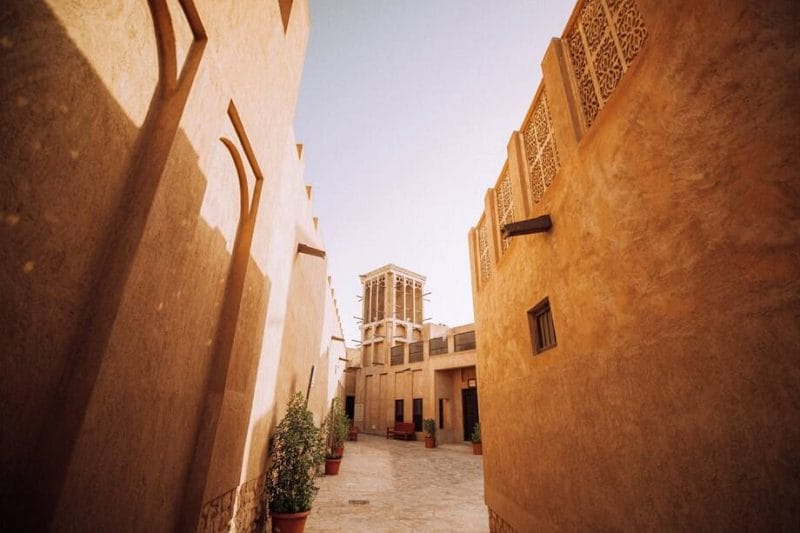
10. Dubai Opera
In Downtown Dubai, across from Burj Khalifa, sits the elegant Dubai Opera, a 2,000-seat venue hosting international performances including opera, ballet, musicals, and comedy shows. The design is inspired by traditional dhow boats, blending heritage with modern architecture. Whether it’s Swan Lake, Les Misérables, or Arabic music nights, there’s always something on. It’s also used for private events and rooftop dining.
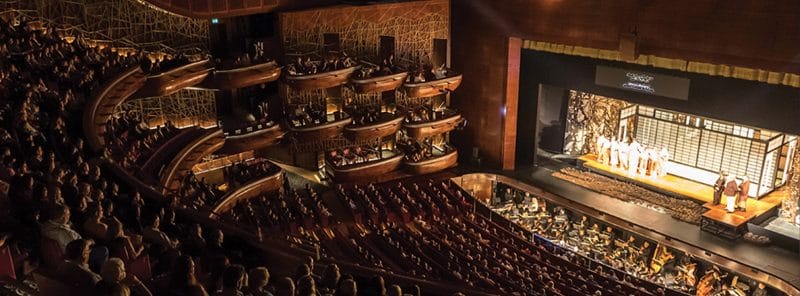
Unique Cultural Experiences in Dubai
Dubai isn’t just skyscrapers and shopping malls, its cultural side is just as fascinating. From traditional souks buzzing with local life to immersive guided tours, the city offers plenty of ways to experience its roots.
Traditional Souks (Gold, Spice, Textile)
Dubai’s traditional souks offer a vibrant, sensory-rich window into the city’s pre-skyscraper past. In Deira, the Gold Souk dazzles with over 380 retailers offering gold, silver, and precious stones, Dubai’s gold trade is valued at over $75 billion annually. Just a few streets away, the Spice Souk tempts with the aroma of saffron, cardamom, dried roses, and frankincense. For textile lovers, the Textile Souk in Bur Dubai bursts with silk, cotton, and embroidered fabrics—perfect for custom garments or souvenirs.
Visitors can haggle for better prices, enjoy traditional dhow crossings at Dubai Creek, and snap Instagram-worthy photos in these maze-like alleys steeped in culture and commerce.
Local Emirati Cuisine & Restaurants
While Dubai hosts nearly every global cuisine, traditional Emirati food is a must-try for cultural immersion. Dishes like Machboos (spiced rice with meat), Luqaimat (sweet dumplings), and Harees (slow-cooked wheat and meat) tell stories of Bedouin life, hospitality, and heritage. A favorite spot is Al Fanar Restaurant, styled like an old Emirati village, or SMCCU’s cultural meals, where guests dine cross-legged while learning about customs from Emirati hosts.
For foodies, this is a rare chance to taste flavors influenced by centuries of spice trade across the Arabian Gulf, Persia, and India, all in one plate. It’s cultural storytelling, one bite at a time.
Etiquette and Local Customs
Understanding and respecting Dubai’s social etiquette can greatly enhance any visit. As a part of the UAE, a Muslim-majority country, modest dress is recommended in public, especially in mosques or traditional areas. Public displays of affection, drinking alcohol outside licensed venues, and loud arguments are considered disrespectful or even illegal.
Visitors should greet with “As-salamu alaykum,” use their right hand for handshakes or giving/receiving items, and remove shoes before entering someone’s home. During Ramadan, non-Muslims should refrain from eating in public during daylight hours. These gestures reflect mutual respect and help foster a deeper connection to local culture.
Guided Cultural Tours (e.g., SMCCU Mosque Visits)
The Sheikh Mohammed Centre for Cultural Understanding (SMCCU) offers some of Dubai’s most enlightening cultural experiences. Their “Open Doors, Open Minds” programs include guided visits to mosques like the Jumeirah Mosque, one of the few in the UAE open to non-Muslims. Here, guests can ask questions freely about Islam, Emirati life, and traditions.
The tours include Q&A sessions, Arabic coffee tasting, and traditional meals served on floor cushions, making it a perfect introduction for first-time visitors. With over 30,000 visitors annually, it’s one of the top-rated cultural activities in Dubai, blending education with warm Emirati hospitality.
Shopping in Dubai
Shopping in Dubai is a dynamic blend of high-end luxury and old-world charm. Whether you’re browsing the glittering halls of the Dubai Mall, the world’s largest shopping destination, or wandering through the spice-scented alleys of the Souk Madinat Jumeirah, every corner offers something unique.
If you’re into designer labels and premium experiences, Mall of the Emirates is a must-visit. Aside from luxury brands, it also houses Ski Dubai, a full-scale indoor ski slope. For a more traditional experience, explore Deira’s Gold Souk, where you’ll find intricate jewelry sold by weight, or the Spice Souk, brimming with aromatic saffron, cardamom, and dried flowers.
When it comes to what to buy, Dubai is famous for its oud-based perfumes, premium dates (try Medjool or Khidri), and 24K gold jewelry at competitive prices. Local handicrafts, including Arabic coffee pots (dallah), carpets, and calligraphy art, also make meaningful souvenirs.
Whether you’re shopping for luxury goods or authentic keepsakes, Dubai delivers an unmatched retail experience rooted in both modern innovation and rich tradition.
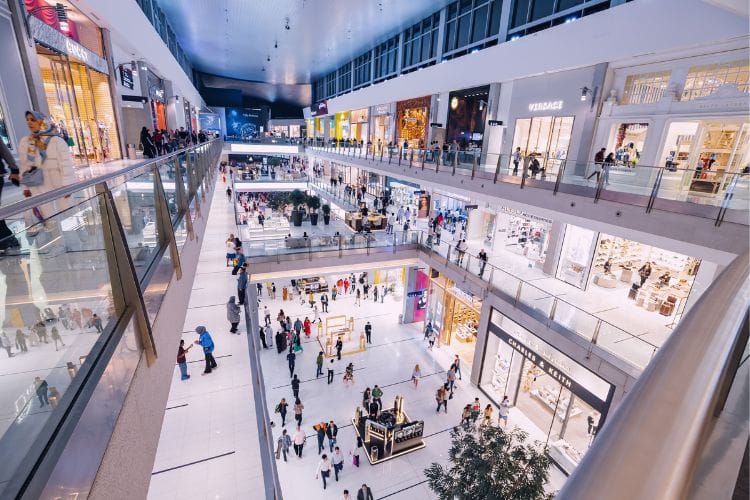
Food Scenes in Dubai
Dubai’s culinary scene is as diverse as its population, offering a mix of traditional Emirati dishes, global flavors, and modern gastronomy. If you want a taste of authentic local cuisine, start with machboos, a spiced rice dish served with meat or seafood. Don’t miss luqaimat, sweet fried dumplings drizzled with date syrup, often served during Ramadan. And while shawarma may not be uniquely Emirati, it’s a street food staple that reflects the city’s Levantine influence.
For a luxury experience, Dubai offers some of the world’s finest dining spots, think At.mosphere in the Burj Khalifa or Pierchic on the water. These restaurants fuse international techniques with local ingredients for a refined culinary journey. On the other hand, street food in areas like Al Karama or Satwa gives you access to rich flavors at budget-friendly prices, from Indian dosas to Pakistani kebabs and Filipino snacks.
Dubai is also accommodating for diverse dietary needs. Halal food is widely available across all price ranges, and veganism is gaining popularity with dedicated restaurants like Wild & The Moon and SEVA Table. Whether you’re a meat lover or plant-based eater, Dubai’s food scene guarantees something to suit every taste.
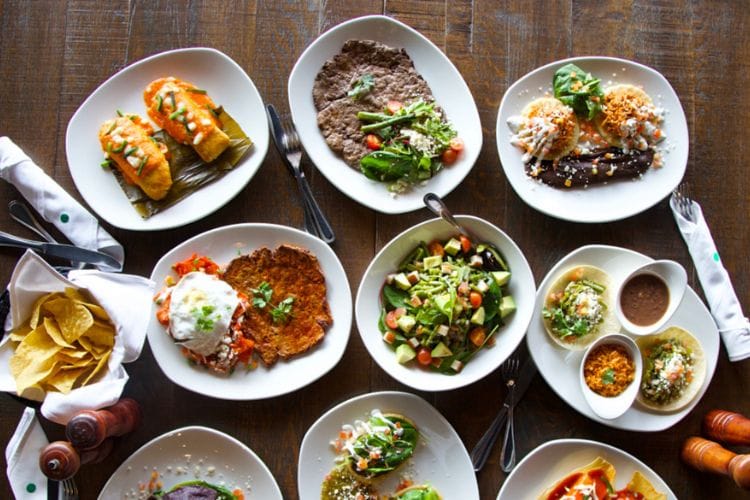
Safety & Etiquette Tips
Dubai is generally a very safe city, but it’s important for tourists to respect local customs and follow the laws. Here’s a quick guide to help you stay safe and avoid misunderstandings during your visit.
- Public Safety: Dubai has a low crime rate, and the city is heavily monitored by CCTV. Still, stay cautious in crowded tourist spots and keep your valuables secure.
- Laws to Know: Avoid public displays of affection like kissing and hugging, especially in conservative areas. Swearing, rude gestures, and disrespecting religion can lead to fines or arrest.
- Dress Code: Modesty is key. Swimwear is only allowed at beaches and pools. In malls or public buildings, opt for outfits that cover shoulders, cleavage, and knees.
- Alcohol Rules: Alcohol can only be consumed in licensed venues such as hotel bars or clubs. Never drink in public or drive under the influence. Penalties are strict.
- Drug Policy: Dubai has a zero-tolerance policy on drugs. Even trace amounts can lead to jail time, so double-check any medication you’re bringing.
- Photography Etiquette: Avoid taking photos of government buildings, airports, and locals without permission.
- Public Behavior: Keep noise levels low, especially in residential or prayer areas. Arguments or fights can lead to police involvement.
- Emergency Contacts: Dial 155 for police, 112 for ambulance, and 110 for fire. Operators speak English and respond quickly.
- Healthcare Access: High-quality clinics and hospitals are easily available. Tourists should carry travel insurance and ID. Pharmacies are also widely available for basic needs.
- COVID-19 Rules: Follow any updated guidelines regarding masks, distancing, or vaccinations, as rules may change.
Cost of Visiting Dubai in 2025
Dubai continues to be a popular yet relatively high-end travel destination. In 2025, a mid-range traveler can expect to spend between $120 to $250 per day, depending on choices in accommodation, transportation, meals, and activities. Budget travelers staying in hostels or budget hotels and using public transport might manage with around $80 per day, while luxury seekers can easily spend over $500 daily at five-star hotels, gourmet restaurants, and exclusive attractions.
Entry tickets to major sites like the Burj Khalifa (around $45–$60) and desert safaris ($70–$150) should be factored in. Public transport is affordable, with Nol Card travel starting at just 3 AED (~$0.80). Dining out can cost as little as $10 for a good street meal or over $100 at upscale restaurants. Overall, planning ahead with package deals or passes can help manage costs efficiently without compromising the experience.
What to Pack for Dubai (Season-Wise)
Packing smart for Dubai can make your trip much more comfortable, especially since the weather shifts between scorching and pleasant. Here’s a quick guide to help you pack the right essentials depending on the season:
Summer (June to September):
- Lightweight, breathable clothing (linen, cotton)
- High SPF sunscreen and sunglasses
- Wide-brimmed hat or cap
- Reusable water bottle
- Sandals or flip-flops
- Light scarf or shawl for modesty indoors
Winter (November to February):
- Light layers for the day (t-shirts, long sleeves)
- A light jacket or sweater for cool evenings
- Closed-toe shoes for comfort
- Swimwear for beach or pool days
- Modest outfits for cultural sites
Spring/Autumn (March to May & October):
- T-shirts, blouses, and breezy pants
- Sunglasses and a sunhat
- A light cardigan for indoor air-conditioning
- Comfortable walking shoes
- Evening outfit for dining or nightlife
No matter the season, don’t forget modest clothing for visits to mosques or traditional areas. Dubai is modern, but respectful dressing goes a long way!
Final Word
Ready to visit a city where luxury meets tradition and every corner offers something new? Dubai is exactly that kind of place, lively, bold, and full of surprises. Whether you’re strolling through gold souks, dining under the stars, or watching the sunset over desert dunes, this city knows how to leave a lasting impression. With the right planning, knowing what to pack, where to eat, and what to expect, you’ll be set for an adventure. Dubai welcomes everyone with its warm hospitality, world-class attractions, and unique charm. So, grab your travel checklist, bring your curiosity, and get ready to create memories that will last a lifetime. Dubai is calling, will you answer?

